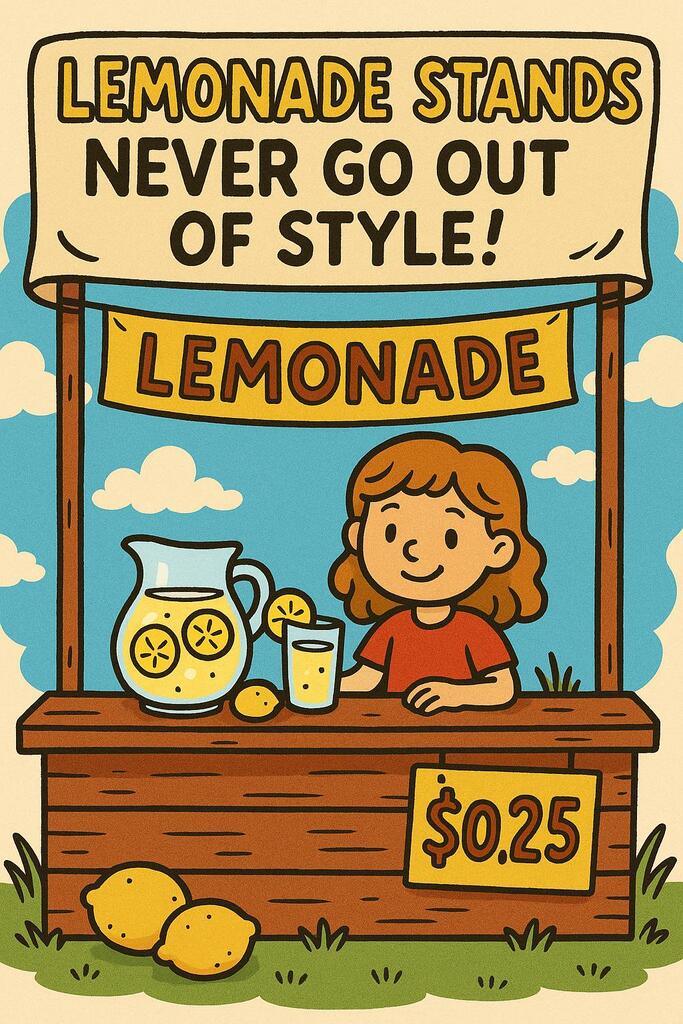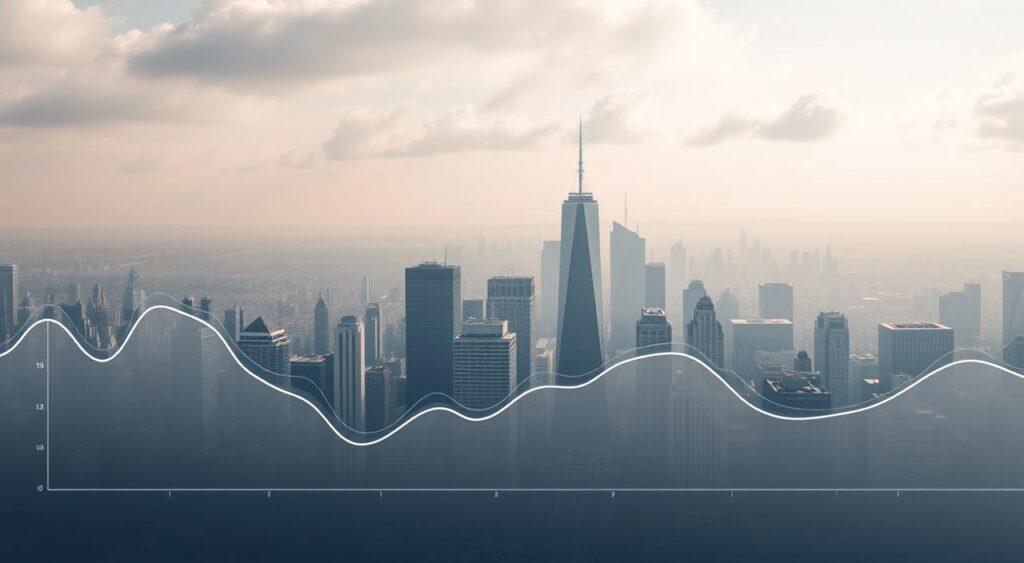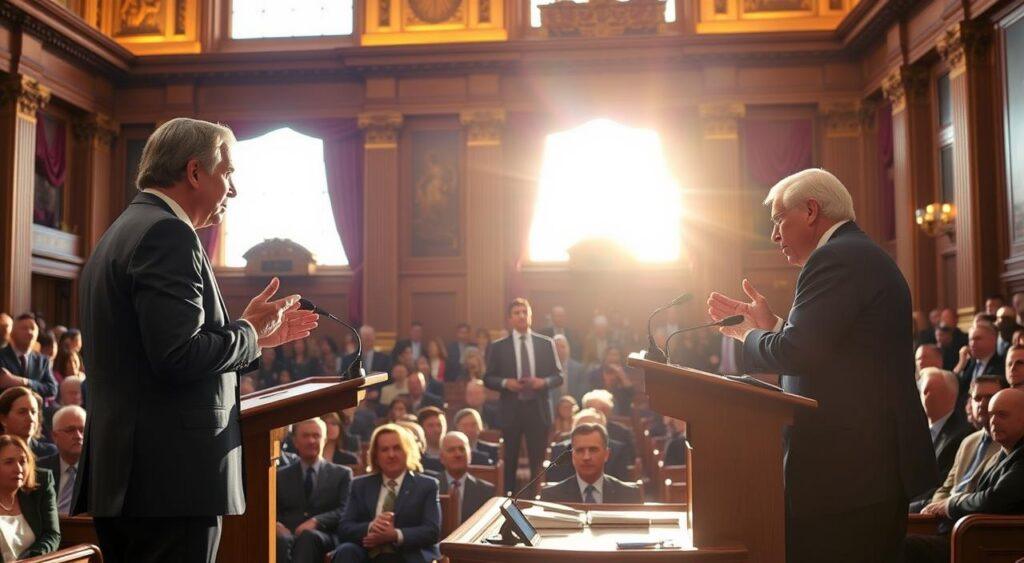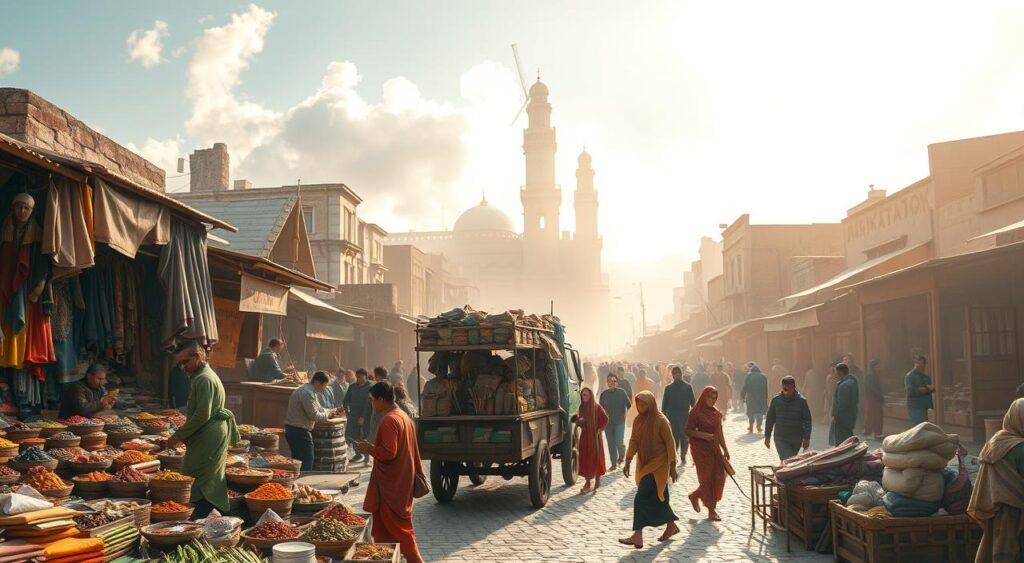Ever wonder why producing something can help you buy what you need? That’s the heart of the Say’s Law mental model—an idea that supply creates demand. Imagine Sarah, a farmer who grows wheat.
When she sells her harvest, she earns money to buy tools, clothes, or even a weekend getaway. Her production didn’t just fill a need—it sparked new purchases. This simple cycle drives economies, big and small.
French economist Jean-Baptiste Say introduced this concept in the early 1800s. He argued that making goods generates income, which then fuels spending. Think about it: when you create value—like baking bread or coding apps—you earn the means to trade for other things. Money? It’s just the middleman in the exchange.
Why does this matter today? From tech startups to local bakeries, production powers markets. If everyone stopped making things, demand would vanish. But when we innovate, we create opportunities for others. Curious how this shapes jobs, prices, or even your side hustle? Let’s dive deeper.
Key Takeaways
- Production drives demand—creating goods or services generates income for future spending.
- Rooted in classical economics principles, this idea has influenced thinkers for centuries.
- Money acts as a tool for exchange, not the source of demand itself.
- Real-world examples include small businesses, tech innovations, and personal skills.
- Understanding this model helps clarify debates about economic growth and stability.
Introduction to Say’s Law Mental Model
Why do some economic ideas spark debates for centuries? This guide explores a concept that’s shaped how we view markets, jobs, and growth. Whether you’re a student, entrepreneur, or just curious, you’ll see how production connects to spending in ways you might not expect.
Context and Relevance of the Topic
Think of a baker who trades bread for cash. That cash lets them buy flour, pay rent, or hire help. This cycle sits at the heart of political economy debates. While classical thinkers focused on supply, John Maynard Keynes later argued that aggregate demand drives economies. Which side holds truth? Both perspectives shape policies on employment, taxes, and recessions.
Objectives of This Ultimate Guide
We’ll break down complex terms like general theory and deficiency into bite-sized ideas. You’ll learn:
- How historical arguments influence today’s policy decisions
- Why your skills or business contribute to broader economic health
- Where critiques from modern economists fit into the picture
Ever thought about how your work affects the economy? By the end, you’ll see the invisible threads linking income, innovation, and market stability. Let’s start untangling them.
Says Law Mental Model Background

How did a 19th-century wine merchant reshape economic thought? Meet Jean-Baptiste Say, a French businessman turned economist. His 1803 book, “A Treatise on Political Economy,” argued that making goods—not hoarding gold—fuels prosperity. Imagine bakeries selling bread to buy ovens, not kings stockpiling coins. This idea shook the mercantilist world.
Jean-Baptiste Say and His Treatise on Political Economy
Say saw wealth differently. While others focused on trade surpluses, he wrote: “Products are paid for with products.” A shoemaker sells boots to earn money for flour. The baker uses that cash to fix his oven. Production starts the cycle. His words influenced Adam Smith and shaped classical economics.
Classical Economics vs. Mercantilist Thinking
Mercantilists treated gold like a scorecard. Nations fought for shiny metals through tariffs and colonies. Say flipped this: real wealth comes from making things people need.
A farmer’s wheat harvest mattered more than a king’s treasure chest. Centuries later, Maynard Keynes would challenge this view, sparking fresh debates about aggregate demand and unemployment.
Why care about 200-year-old ideas? Because today’s policy debates—tax cuts, stimulus packages, job programs—still echo these clashes. Understanding history helps us see why economists disagree… and how your work fits into the bigger picture.
Core Principles Behind Say’s Law

Why do lemonade stands never go out of style? They perfectly show how making things creates opportunities to buy things. When a kid sells lemonade, they earn cash to spend on toys or snacks. Their tiny business isn’t just about drinks—it’s proof that output sparks new purchases.
Production as the Source of Demand
Think of a carpenter building chairs. Every sale gives them money to pay bills, hire helpers, or upgrade tools. This cycle works because making something valuable generates income. Critics sometimes claim markets face glut—too many goods and not enough buyers. But that’s like saying a baker made too many cookies… while people line up for bread.
Prices adjust naturally when proportions are right. If chairs pile up unsold, the carpenter might lower costs or switch to making tables. The real issue? Mismatched output, not overall excess. When production aligns with needs, employment grows and economies thrive.
Debunking Overproduction Myths
Ever heard someone say, “We’re producing too much”? Say’s Law flips that idea. Imagine a shoe factory making 10,000 left boots but no right ones. The problem isn’t aggregate overproduction—it’s a mix-up in what’s made. True glut happens when goods lack value, not when supply outpaces demand.
Economists debate whether policy should boost spending or production. But according to Say’s view, focusing on better goods—not just more money—creates lasting growth. Your skills? They’re part of this puzzle. What could you make today that others need tomorrow?
Says Law Mental Model in Modern Economics

Picture Mia, a coffee shop owner who starts selling homemade pastries. Her new treats attract more customers, letting her hire a barista and expand her menu. This isn’t just business growth—it’s a modern twist on an old idea.
Over two centuries, economists have debated how production fuels economies. Today, those debates shape everything from tech startups to government policy.
Evolution of the Concept from Classical to Modern Times
In the 1930s, John Maynard Keynes challenged the classical view. He argued that demand—not just supply—drives economies. Imagine a town where factories make shoes but no one buys them. Keynes believed governments should step in, spending money to boost aggregate demand. His ideas fueled New Deal programs and modern stimulus checks.
Yet supply-side thinkers disagree. They argue lower taxes and fewer rules let businesses like Mia’s thrive, creating jobs naturally. This tug-of-war shapes today’s growth strategies. Should we focus on making better goods (classical) or ensuring people can buy them (Keynesian)?
Modern economies add another layer: services. Think app developers or yoga instructors. Their work doesn’t produce physical goods, but it generates income and jobs. This shift makes the original model more nuanced—but no less relevant.
Why care about these old arguments? Because they answer questions we still ask. Can tax cuts revive struggling towns? Should governments fund green energy projects? Understanding this evolution helps you see the roots of today’s policy debates. What economic legacy will your work create?
Understanding the Production-Demand Relationship
Picture a bakery selling fresh bread each morning. Every loaf baked doesn’t just fill a customer’s plate—it fuels a chain reaction. The baker uses their earnings to buy flour, pay employees, and upgrade equipment. This cycle shows how supply sparks demand, not the other way around.
How Supply Creates Demand
Let’s break it down step by step:
- A farmer grows wheat (supply).
- They sell it to a miller, earning income.
- The miller grinds flour and sells it to the baker.
- The baker makes bread, creating jobs and spending power.
Each transaction starts with making something useful. As economist Jean-Baptiste Say noted: “Products are paid for with products.” Money simply helps us trade value efficiently. When you work, you’re not just earning cash—you’re generating future purchases.
The Role of Money as a Medium of Exchange
Imagine trading apples for shoes directly. Tricky, right? Money solves this by acting as a middleman. Here’s how it works:
| Barter System | Money-Based System |
|---|---|
| Requires mutual needs | Works for any transaction |
| Limited by goods available | Flexible purchasing power |
| Slows trade | Speeds up economic activity |
When the bakery sells bread, that money flows to suppliers, workers, and local businesses. This aggregate demand grows naturally from productive work. More output means more jobs, higher income, and stable prices.
Why does this matter for you? Every skill you use or product you create feeds this cycle. What could your next “loaf of bread” look like?
Entrepreneurs, Innovation, and Prosperity

What do a food truck owner and a software developer have in common? Both are entrepreneurs—people who spot opportunities and turn ideas into action. They invest time, money, and creativity to solve problems.
Like Rosa, who started selling handmade candles at farmers’ markets. Her success let her rent a storefront, hire two employees, and partner with local artists. Small steps? Maybe. But they ripple through the economy.
Impact on Investment and Capital Formation
Rosa’s story shows how smart investment builds economic muscle. When she bought better wax molds, her production doubled. Hiring staff boosted her sales, creating income for others. This cycle—saving profits to expand—fuels growth. Capital isn’t just cash. It’s tools, skills, and partnerships that make businesses thrive.
Imagine a town without innovators. No coffee shops, repair services, or app designers. Political economy thrives when people take risks to meet needs. Supportive policy, like tax breaks for startups, encourages this. When entrepreneurs win, communities gain jobs, better services, and stable prices.
Economists debate the best way to nurture innovation. But one truth remains: every new idea—whether a gadget or a gluten-free bakery—adds value to the aggregate economy. What could your neighborhood create with more dreamers and doers?
Critics and Supporters of Say’s Law
Why do smart people disagree about something as simple as supply and demand? The answer lies in how we view economic balance. Some see production as the engine of growth, while others stress the need for spending power. Let’s explore both sides.
Keynesian Critiques and Alternative Perspectives
John Maynard Keynes famously argued that economies can stall even when goods exist. Imagine a town with unsold bread and jobless bakers. He called this a deficiency in aggregate demand—people have needs but lack money to buy. His solution? Government spending to boost jobs and income.
Keynesians point to the 1930s Depression as proof. Factories stood idle while workers starved. Keynes believed saving during crises worsens unemployment. “In the long run, we’re all dead,” he quipped, urging quick action over waiting for markets to self-correct.
Support from Supply-Side and Austrian Economists
Free-market thinkers disagree. They argue that real glut happens when products lack value—not from overproduction. Picture a shoe store with 100 left boots and zero right ones. The issue isn’t too many shoes, but mismatched supply.
Austrian economists stress prices as signals. If bread sits unsold, lower the cost. Entrepreneurs then redirect resources to meet needs. Tax cuts and deregulation, they say, fuel innovation better than policy interventions.
| Keynesian View | Supply-Side View |
|---|---|
| Demand drives growth | Production fuels spending |
| Government spending fixes gaps | Markets self-adjust naturally |
| Focus on short-term fixes | Emphasis on long-term investment |
Do shortages in one area really mean gluts elsewhere? Both sides agree that balance matters. Your local economy thrives when bakers, builders, and baristas align their work with community needs. The debate continues because choices here shape jobs, prices, and your wallet.
Linking Says Law to Business Cycles and the ATBC

Ever notice how some industries boom while others struggle? These ups and downs—called business cycles—often trace back to how we make and invest in goods. When businesses misread demand signals, they might build too many houses or train too few nurses. This mismatch creates ripples across the economy.
Says Law Mental Model: When Good Investments Go Bad
Imagine a town where everyone starts building luxury condos. Banks offer cheap loans, so construction booms. But what if most locals need affordable rentals? This mismatch is malinvestment—putting resources where they’re not truly needed. Like planting tomatoes in a desert, it looks productive but wastes effort.
Austrian economists argue this happens when artificial signals (like ultra-low interest rates) distort decisions. The result? Empty condos, bankrupt builders, and workers stuck in dying industries. History shows this pattern repeats every few decades. Remember the 2008 housing crash?
From Tech Booms to Manufacturing Slumps
Think about the smartphone revolution. As tech companies grew, factories making flip phones laid off workers. Was this a glut of phones? No—it was a shift in what people wanted. Markets naturally redirect resources over time, but the transition can hurt.
| Boom Phase | Bust Phase |
|---|---|
| High demand for new tech | Older industries shed jobs |
| Low unemployment in hot sectors | Workers retrain for new roles |
| Prices rise in popular areas | Underused resources get cheaper |
Economists have debated this way of balancing for over a century. While one sector shrinks, others expand—like healthcare services during population aging. The key? Letting prices and wages adjust to guide resources where they’re needed most.
Have you seen this happen locally? Maybe a mall closing while delivery startups hire drivers. These shifts remind us that true output isn’t just making more stuff—it’s making the right stuff. When we get that balance wrong, the whole economy feels the result through job losses or inflation.
Practical Implications For The U.S. Economy

What does a family-owned factory in Ohio have to do with Washington’s tax plans? More than you might think. When businesses produce goods, they create income streams that ripple through communities. This simple truth shapes how economists and lawmakers tackle challenges like job creation and inflation.
Relevance for Fiscal Policy and Investment Strategies
Take the 2017 Tax Cuts and Jobs Act. By lowering corporate taxes, the policy aimed to boost production—which supporters argued would raise wages and hiring. Critics warned of deficiency in public services if revenue dropped. Both sides drew from Say’s ideas: does freeing up capital spur innovation, or should governments directly stimulate spending?
Investment strategies often mirror this debate. A tech startup might reinvest profits into R&D (supply-side thinking), while a city council funds job training programs (demand-side). Finding balance matters. As John Maynard Keynes noted, extreme focus on one approach risks economic imbalances.
Effects on Employment, Growth, and Market Stability
Consider Detroit’s auto industry revival. When electric vehicle production ramped up, it created 15,000+ jobs—proving that targeted growth sectors lift local economies. But when supply chains broke during COVID, prices for cars and parts soared. Markets stabilize best when production aligns with real needs.
| Production-Led Approach | Demand-Led Approach |
|---|---|
| Tax breaks for manufacturers | Stimulus checks for consumers |
| Focus on long-term capacity | Quick fixes for spending slumps |
Your town’s bakery isn’t just selling bread—it’s part of a political economy puzzle. Every hiring decision or price change reflects bigger debates. Want steady jobs and affordable goods? Support policies that value both making and buying.
Conclusion
Have you ever considered how your daily work contributes to economic growth? At its core, the idea we’ve explored shows that creating value—whether through goods, services, or skills—fuels spending and jobs.
Jean-Baptiste Say’s 19th-century book taught us that output sparks demand, not just money. Think of farmers growing crops or developers coding apps: their efforts generate income to buy other needs.
History reveals lively debates. Classical thinkers focused on production, while Keynesians stressed aggregate demand. Today’s economists still grapple with these questions in policy decisions. Should governments cut taxes to boost businesses or fund programs to support spending? Both approaches shape prices, jobs, and community well-being.
Your choices matter. Every product you make or service you offer adds links to this economic chain. Could your next project address unmet needs in your neighborhood?
Understanding these principles helps us build smarter, more stable markets. After all, when we align value creation with real-world needs, everyone benefits. What step will you take today to strengthen tomorrow’s economy?


